Grand Final: Cassini before diving into the atmosphere of Saturn

Artistic interpretation: NASA / JPL-Caltec (hereinafter NASA photos)
April 26, almost 20 years after the start, the last stage of the life of the Cassini research probe began. The interplanetary station will make 22 flights between Saturn and its inner ring, and then, in the fall of the current year, it will come closer to the planet and will transmit data on the atmosphere to its very end. In the meantime, astronomers have the opportunity to look at Saturn and its satellites from a new perspective.
Recently, Cassini transmits detailed photographs of Saturn's rings, made from a record close distance.
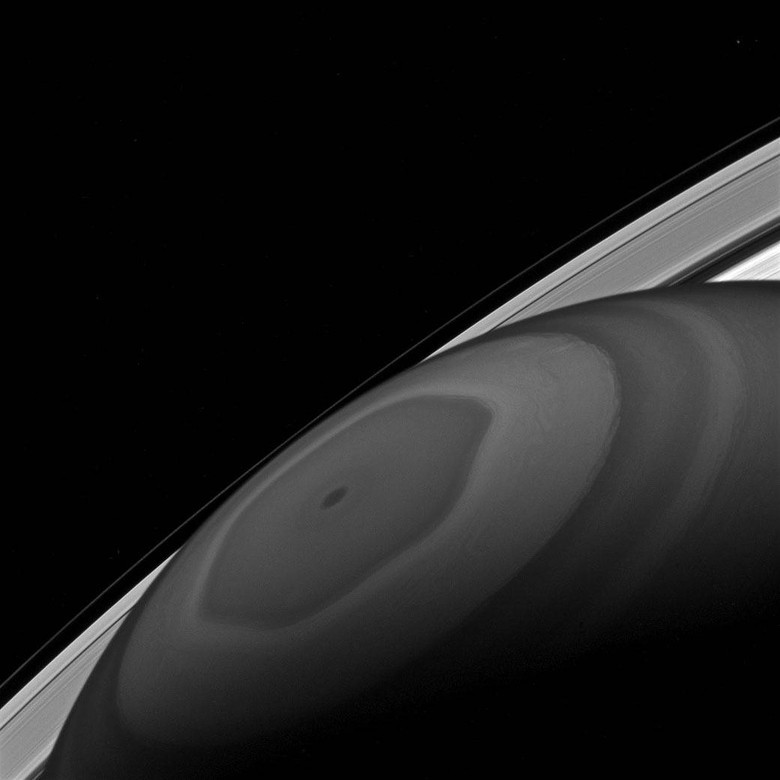
In the center is a hexagonal formation - “Hexagon”, a long-term storm in the subpolar region of Saturn.
The mission began on October 15, 1997 with the launch of the TitanIVB / Centaur rocket carrying the NASA Cassini apparatus, and the Huygens European Space Agency probe attached to it. The probe was designed to study Titan.
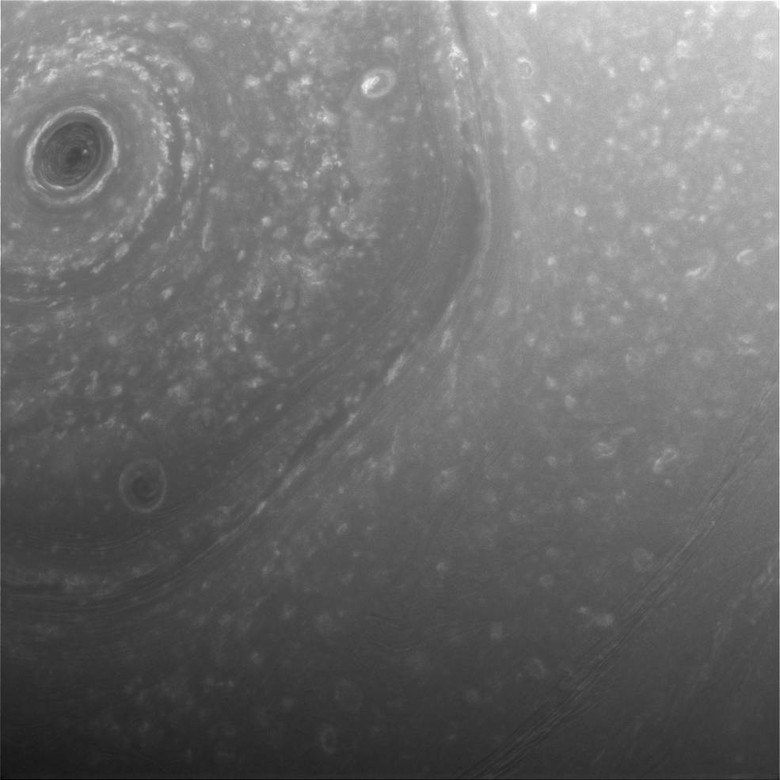
In 2004, the device reached Saturn and said goodbye to Huygens, who went to Titan. Since then, the mission has been repeatedly extended, but in 2017, Cassini’s energy resource came to an end. In order to avoid an accidental fall on Enceladus, which could bring microorganisms from Earth to the satellite, it was decided to destroy Cassini in the atmosphere of Saturn, thereby obtaining valuable data on the composition of the giant.
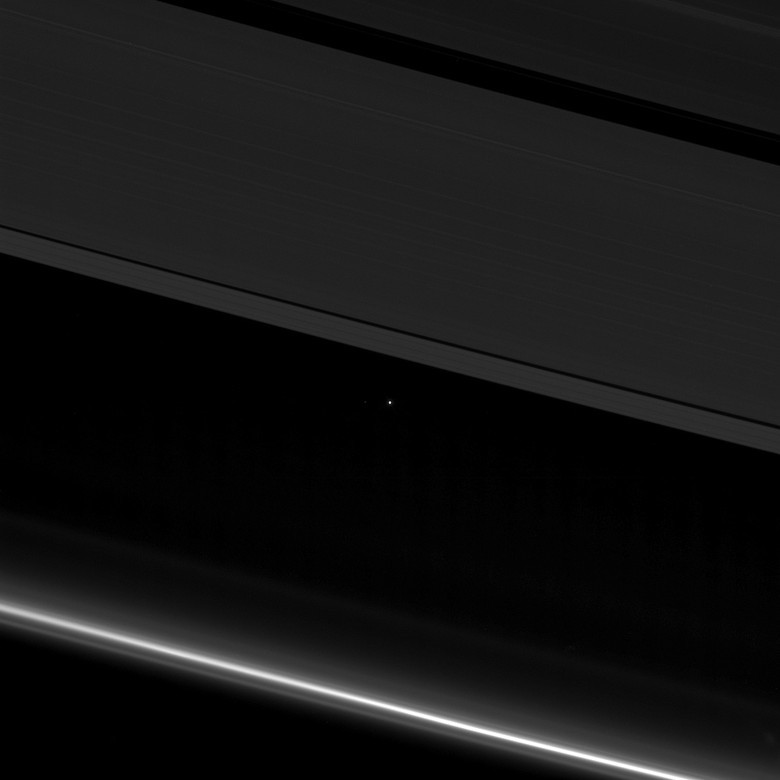
The white point in the center of the picture is the Earth that Cassini photographed between the rings of Saturn. To home more than a billion kilometers.
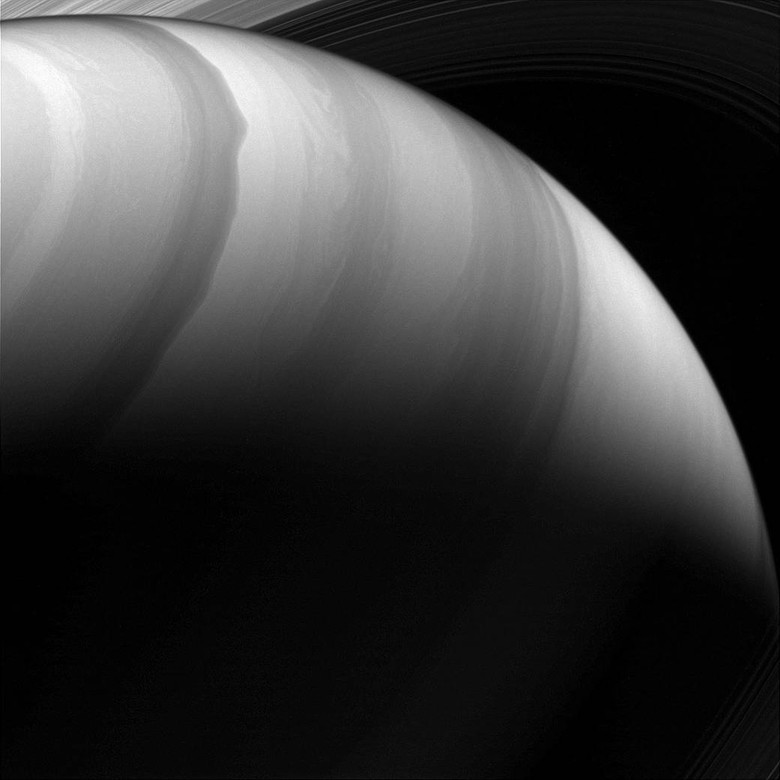
This view was taken from a vantage point about 28 degrees above the equator of Saturn. The shot was taken by a Cassini wide-angle camera on December 2, 2016, at a distance of 953,000 kilometers from Saturn. The image scale is 57 kilometers per pixel.

Saturn’s high-speed atmospheric winds create turbulence, similar to watercolor paintings. The wind on Saturn can reach speeds of more than 1,800 kilometers per hour - one of the fastest movements of atmospheric masses in the solar system.
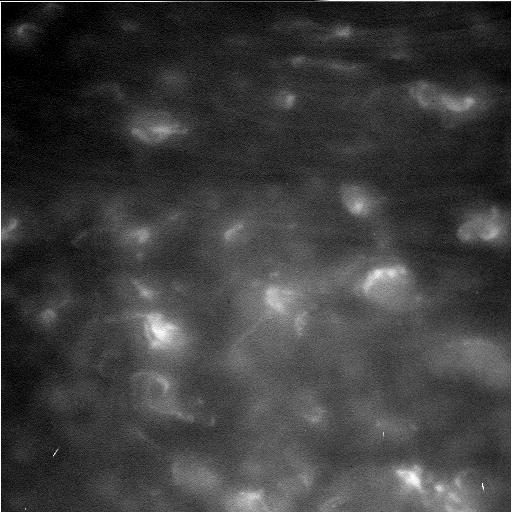
Saturn, shot by Cassini from the closest distance
As we wrote on Hi-Tech Mail.Ru , the distance between the rings and the upper layers of the atmosphere of Saturn is about 2000 kilometers. The first “dive” into the space between the planet and the rings occurred on April 26, 2017. Cassini slipped through this “gap” at a speed of 124,000 km / h. At the same time, as a protection against ring particles that could damage it, the probe used a large antenna, turning it away from the Earth and towards obstacles.
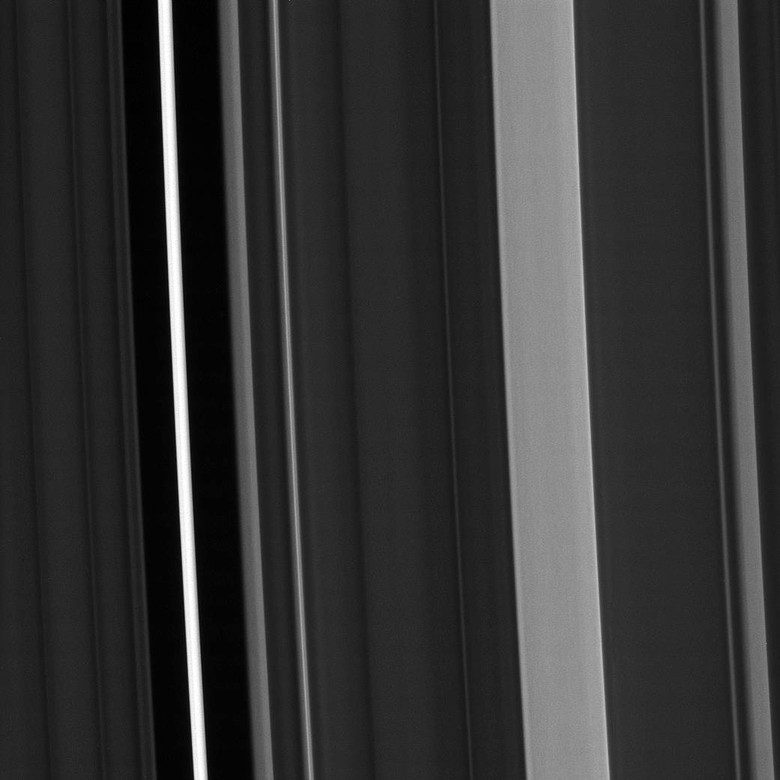
During the passage of the rings apparatus using the device Audio and Plasma Wave Science (RPWS), which detects radio and plasma waves, was able to record sound. As a result, we can “ hear ” dust particles falling on the antenna of the instrument, the sounds of which contrast with the usual “whistles and creaks” created by charged particles in space.
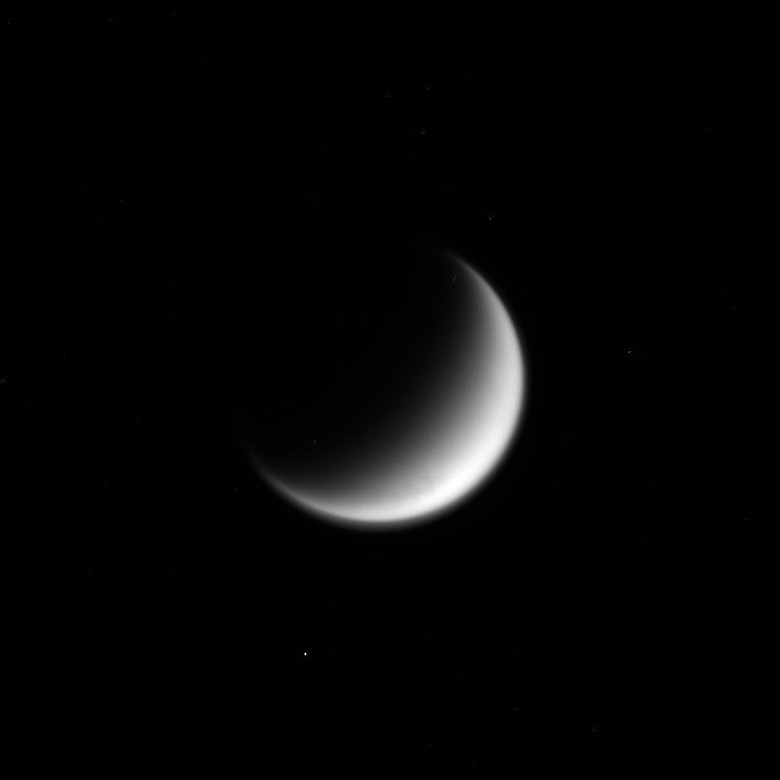
In addition, in April, Cassini made the last final flight around Saturn’s largest moon, Titan. In the photo above, you see the Titan, located just 1000 km from Cassini.

The gravity of Saturn’s largest satellite has changed the station’s trajectory - thanks to a gravitational “push”, a series of 22 final revolutions in orbits between the ring system and Saturn began. A detailed schedule of the mission is available on the NASA website - you can find out which days Cassini will fly under the rings.

Cassini took a picture of the rings at a distance of about 312,000 kilometers from Saturn. The image scale is 2 kilometers per pixel. This region has not been explored until now, because no spacecraft has ever come so close to Saturn.
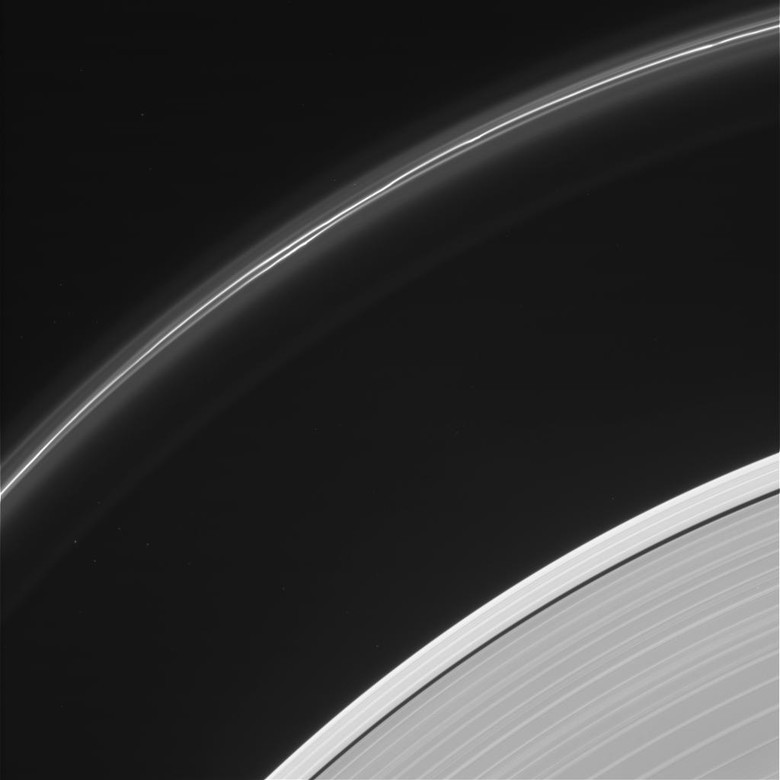
On May 2, the probe passed again through the plane of the rings in the gap between Saturn and the inner edge of its rings. Photographs and scientific data are only being transmitted to Earth.

In this image, you see a cluster of particles at a distance of 134,500 km from Saturn.
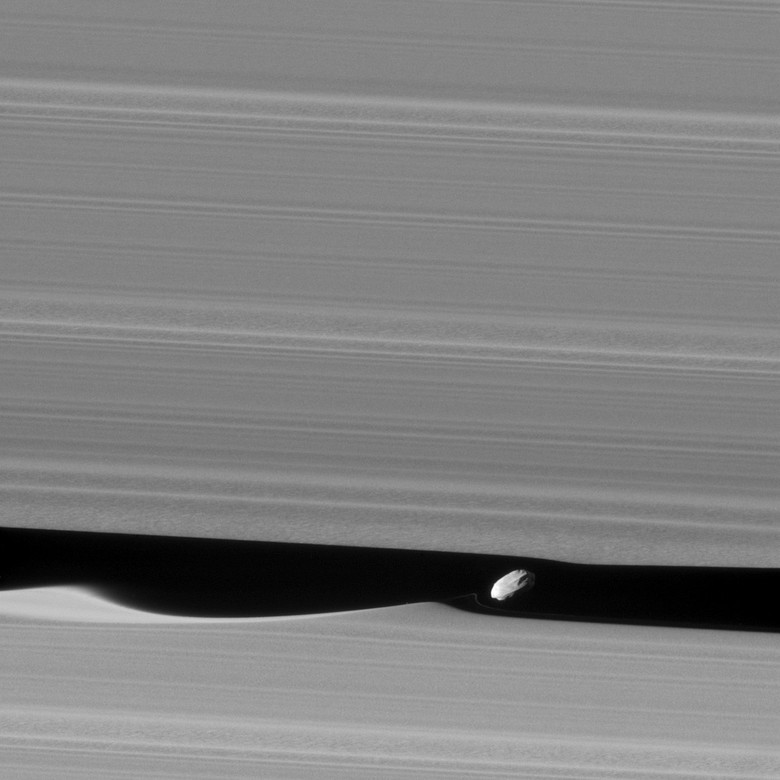
Previously, the probe photographed Daphne - a small moon, which is in the gap of one of the rings of Saturn. Daphne generates waves on the edge of the halves of the ring.
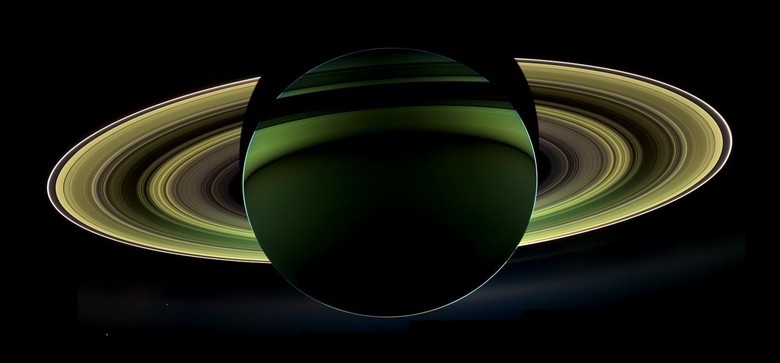
September 15, 2017 Cassini will make his last maneuver and will be sent to the atmosphere of Saturn, but the information received is enough for years of research.
All new pictures taken by Cassini can be seen on the special page of the NASA site.
In conclusion, we will show two clips about the Cassini mission (carefully, Russian translation):
Together with NASA we recall the main stages of life and the discoveries of Cassini.
Video, summing up and telling about the main achievements of the mission. Thank you, Cassini!
')
Source: https://habr.com/ru/post/403623/
All Articles